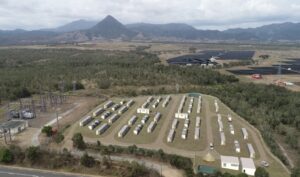Australian battery storage manufacturer Redflow has conceded that it will be unable to compete with lithium-based battery storage products in the mass consumer market, even though it insists it will have a niche presence because of the quality and reliability of its zinc-bromine flow battery.
The Brisbane-based company, which is listed on the ASX, made the admission in a major strategic review released on Monday that includes the shift of its manufacturing base away from Mexico and to south-east Asia, and a shift in its major market to the industrial, off-grid and telecommunications market.
The problems facing Redflow in the homeowner market have been widely anticipated since Tesla revealed an effective 50 per cent drop in the cost of lithium-ion battery storage with the release of its Powerwall 2 battery late last year. Other battery storage manufacturers have since followed suit with major price falls.
Redflow says its ZCell flow batteries, which use a different chemistry, offer deeper depths of discharge and are longer lasting than its lithium-based rivals, but admits it won’t be able to match them on price.
“Redflow batteries are more expensive than commercially mature and volume-produced lithium-based batteries,” it says in a statement.
“Despite this price differential, Redflow’s ZCell battery is achieving success with early-adopter and technically sophisticated customers who are prepared to pay a higher purchase price for an energy storage system they identify as technically superior.
“The review anticipates that this may not translate into strong sustained sales growth in the mid and late majority residential market, due to the price-sensitivity of competitive, highly commoditised markets, which tend to prioritise a low purchase price over technical advantages, such as those offered by Zinc-Bromine flow batteries.”
As a result of this, the company, now led by Simon Hackett, the biggest shareholder, has decided to prioritise its sales and marketing effort to “mature” markets such as telecommunications, industrial, commercial, remote/off-grid power and ‘weak-grid’ market segments, where it expects to replace existing lead acid battery installations.
It says these markets, which require large arrays of battery storage than a household, fit the “sweet spot” of Redflow’s value proposition, and it notes that Asia alone has more than 2.8 million telecommunications tower sites. Redflow earlier this month recorded its largest ever sale to a company in the telecommunications sector.
This, and recent problems with the manufacturing the product, has caused Redflow to decide to shift its manufacturing base from the Mexican operations of Flex to a new site in south east Asia. It will also cut staffing in European and US markets to lower operating costs.
“Redflow’s opportunity in the telco/commercial/industrial sector is predicated on replacing short-lifetime Lead-Acid batteries with long-life ZBM2 products.
“The Strategic Review identified that Redflow batteries have unique competitive advantages over existing battery chemistries including their ability to operate in high ambient temperatures and on a daily 100 per cent Depth of Discharge usage cycle without degrading storage capacity or lifetime.
“The review noted that Lead Acid battery lifetime can be substantially reduced by exposure to high ambient temperatures and by their use for applications that require frequent or deep cycling.”
The strategic review notes that while the company has proved that its products work reliably, and can be commercially manufactured, it must now work on driving down manufacturing costs – aiming for a 30 per cent in future years as it scales up production.
It says the Flex factory in Mexico did not have the right location, skill-set, or potential scale up rates to meet Redflow’s commercial needs, and the current manufacturing arrangements did not deliver sufficient net profit margin for the business to be sustainable.
“Redflow is confident that the operating path described here is tenable, appropriate, and provides the best prospects of commercial success for the company,” it says. It will make a further update in June.









